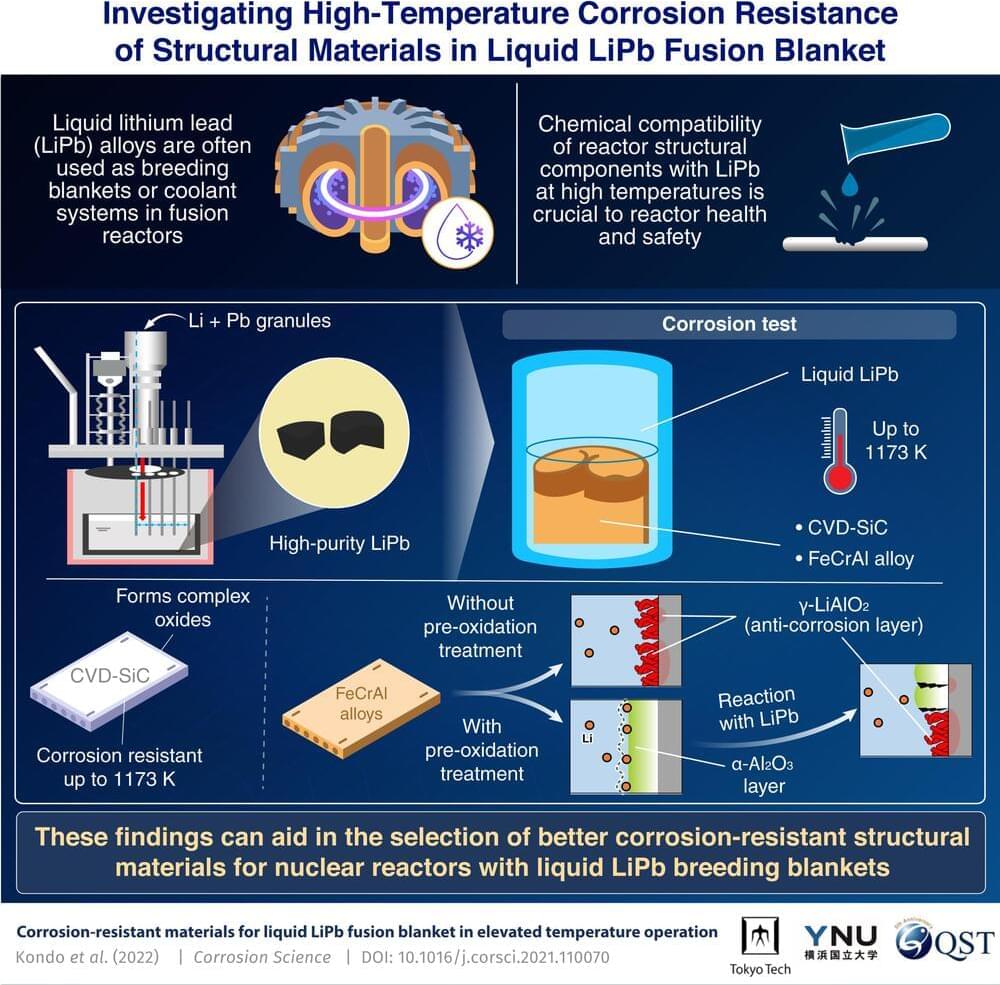Do two promising structural materials corrode at very high temperatures when in contact with “liquid metal fuel breeders” in fusion reactors? Researchers of Tokyo Institute of Technology (Tokyo Tech), National Institutes for Quantum Science and Technology (QST), and Yokohama National University (YNU) now have the answer. This high-temperature compatibility of reactor structural materials with the liquid breeder—a lining around the reactor core that absorbs and traps the high energy neutrons produced in the plasma inside the reactor—is key to the success of a fusion reactor design.
Fusion reactors could be a powerful means of generating clean electricity, and currently, several potential designs are being explored. In a fusion reactor, the fusion of two nuclei releases massive amounts of energy. This energy is trapped as heat in a “breeding blanket” (BB), typically a liquid lithium alloy, surrounding the reactor core. This heat is then used to run a turbine and generate electricity. The BB also has an essential function of fusion fuel breeding, creating a closed fuel cycle for the endless operation of the reactors without fuel depletion.
The operation of a BB at extremely high temperatures over 1,173 K serves the attractive function of producing hydrogen from water, which is a promising technology for realizing a carbon-neutral society. This is possible because the BB heats up to over 1,173 K by absorbing the energy from the fusion reaction. At such temperatures, there is the risk of structural materials in contact with the BB becoming corroded, compromising the safety and stability of the reactors. It is thus necessary to find structural materials that are chemically compatible with the BB material at these temperatures.
